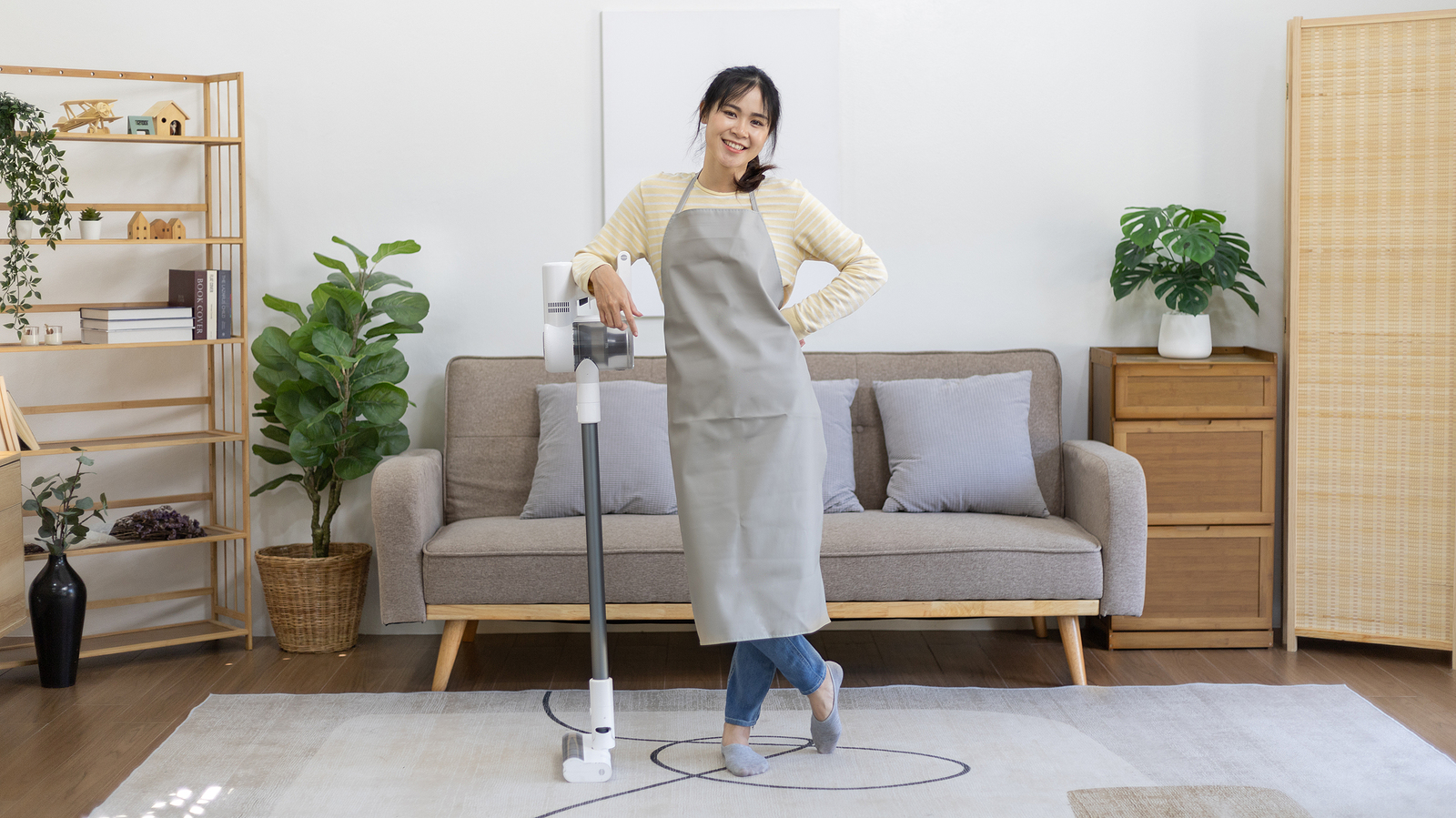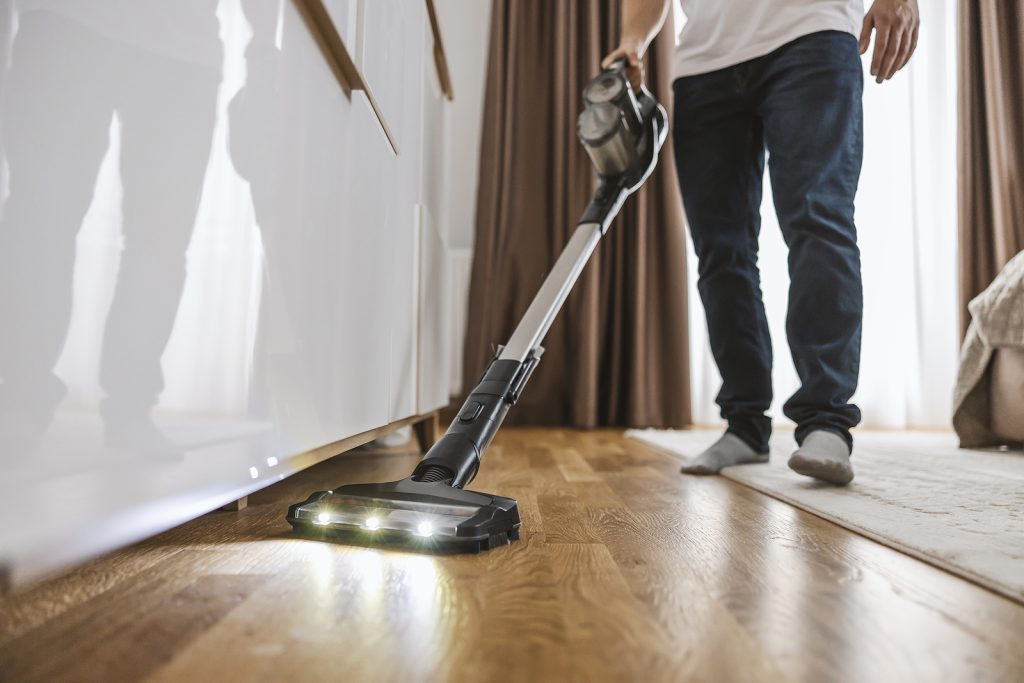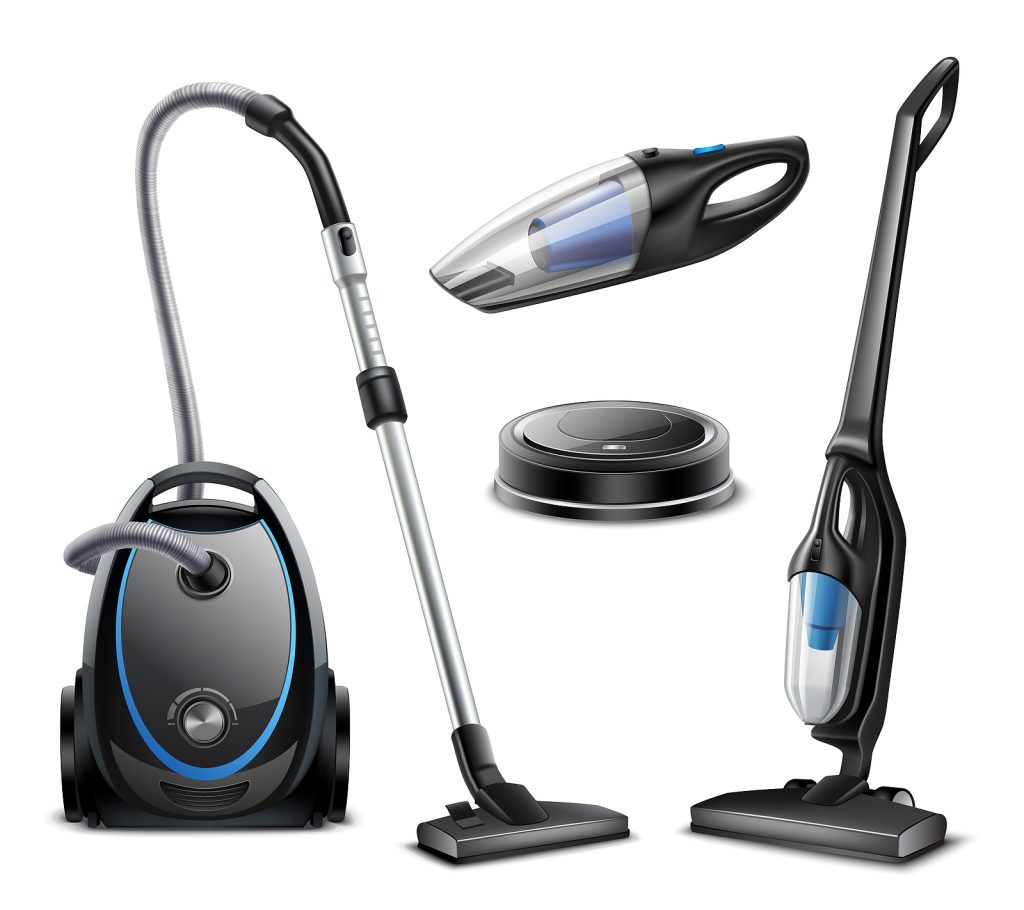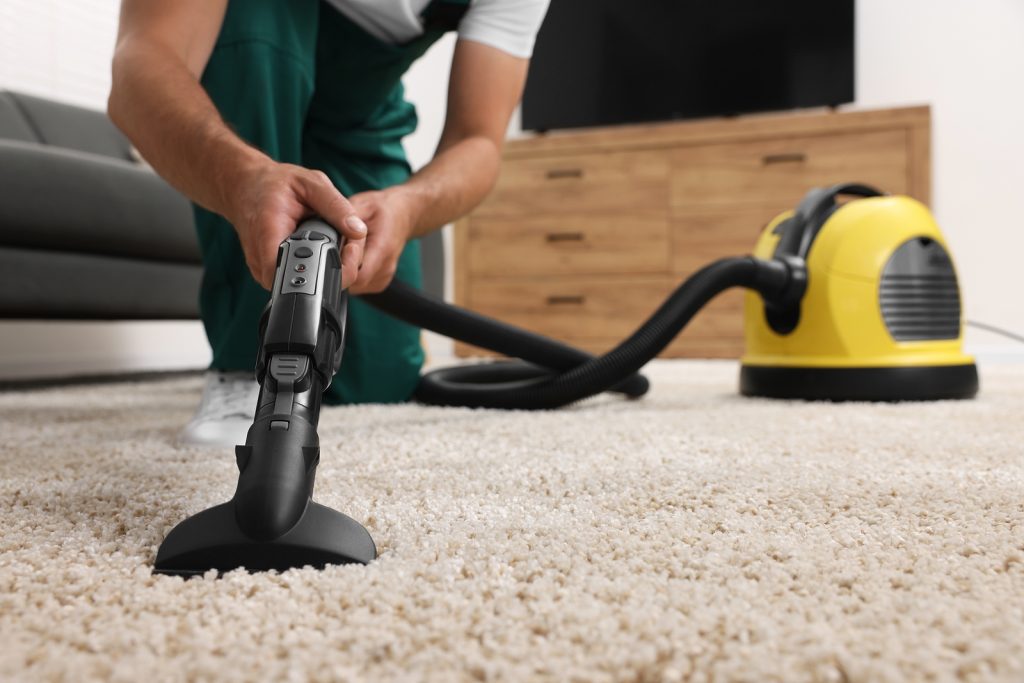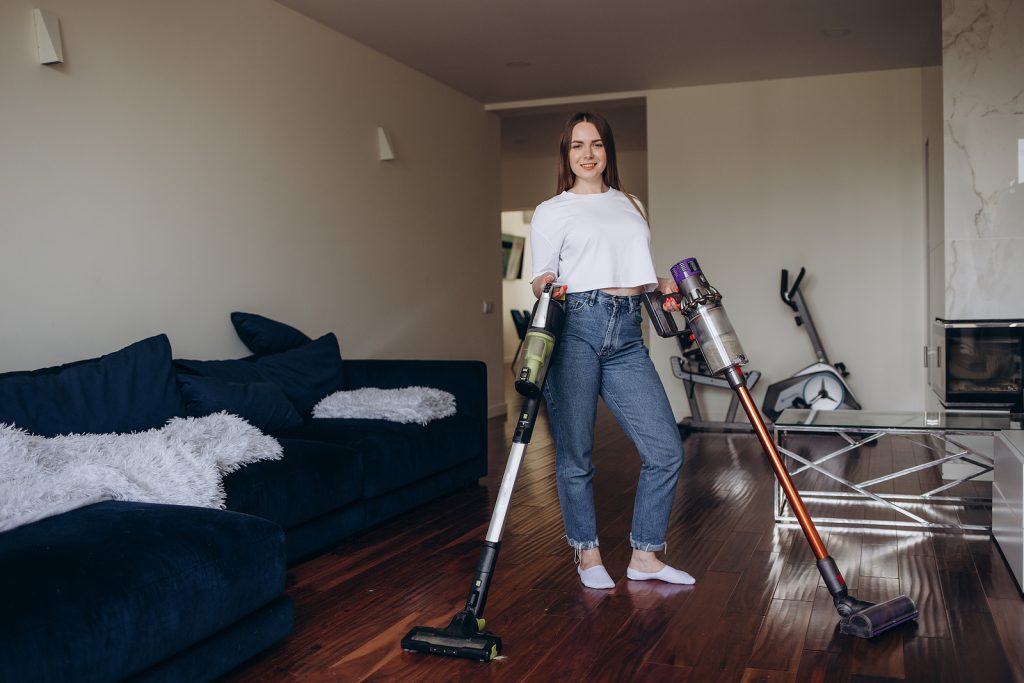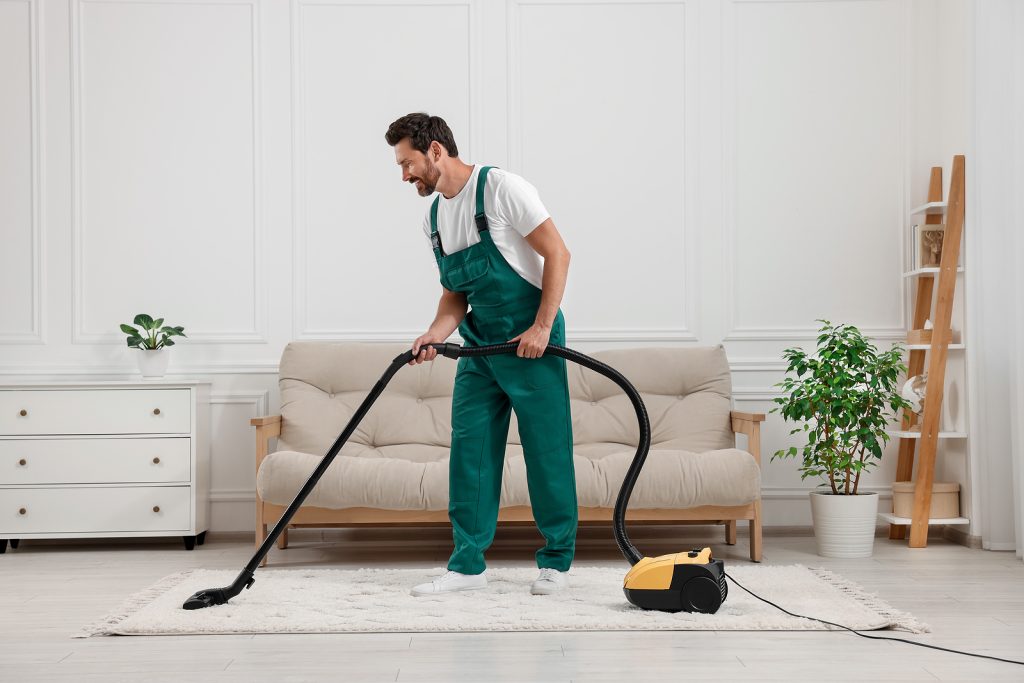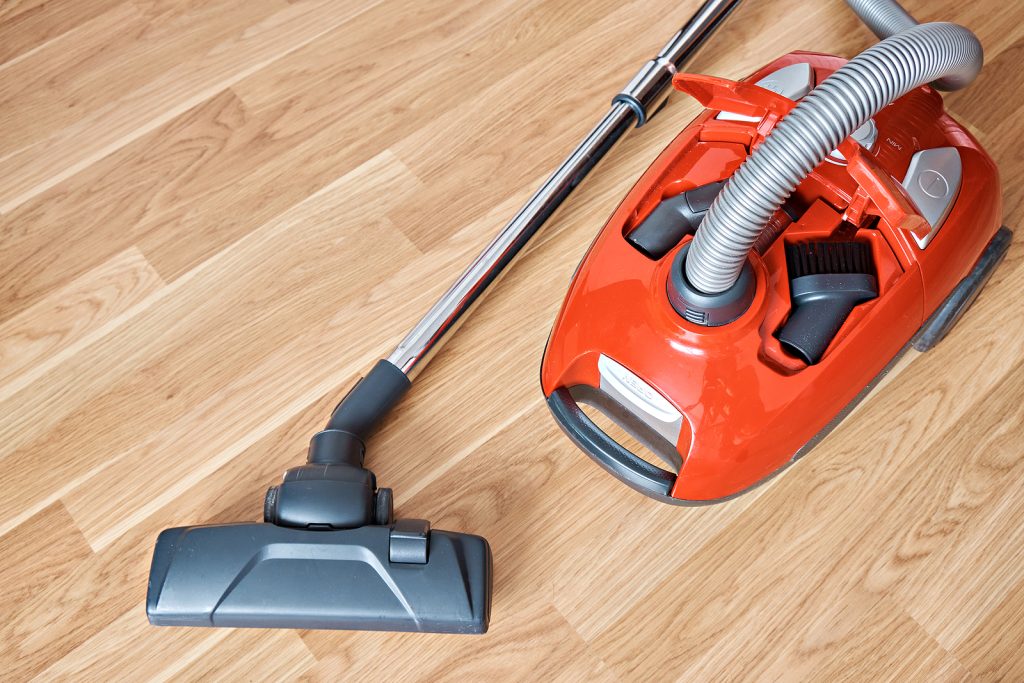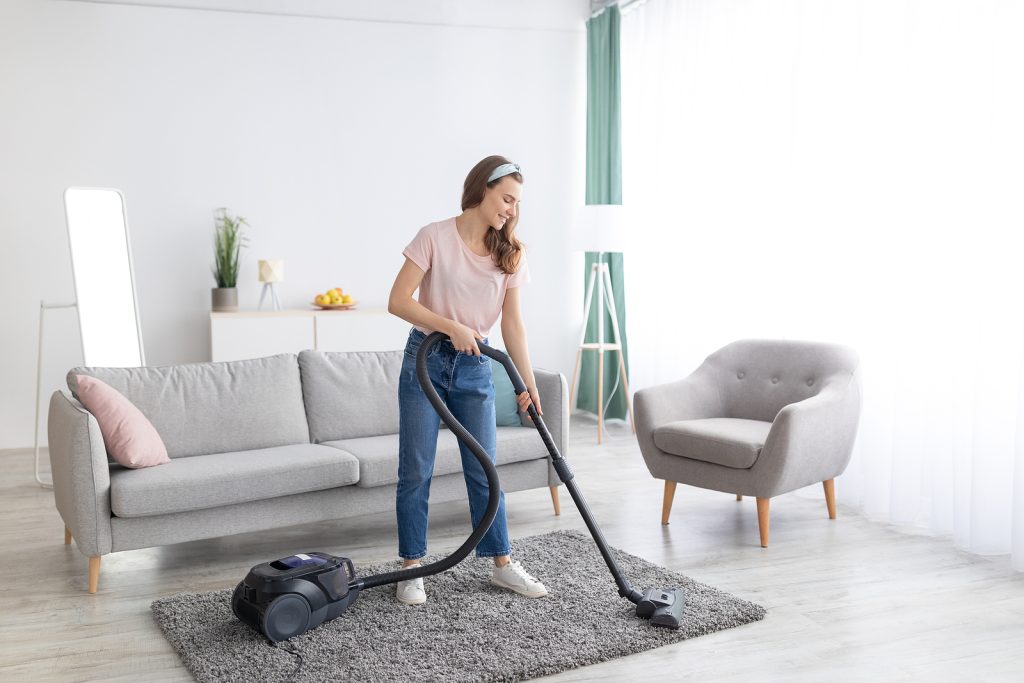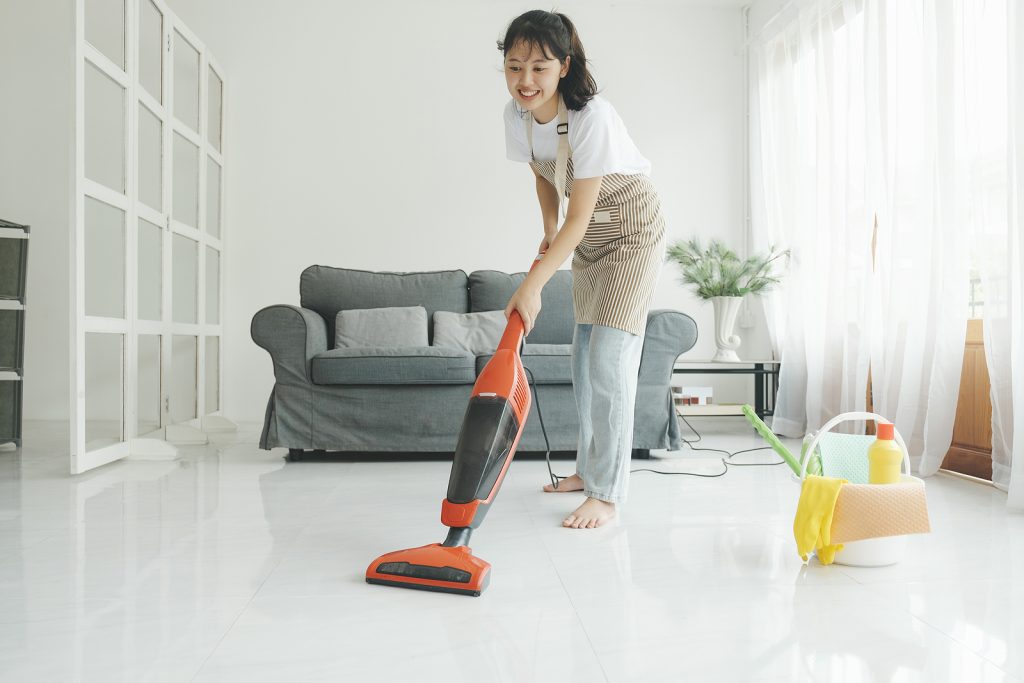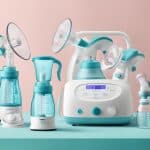A Complete Buyer’s Guide for Vacuum Cleaners
When it comes to keeping your home clean, a vacuum cleaner is an essential tool. However, with so many options on the market, it can be overwhelming to choose the best one for your needs. Whether you have pets, allergies, or just want a machine that can handle multiple surfaces, there are several factors to consider when selecting a vacuum cleaner.
Understanding your cleaning needs is the first step in choosing the best vacuum cleaner for you. Do you have carpet or hardwood floors? Do you have pets that shed? Are you or someone in your household prone to allergies? These are all important questions to ask yourself when deciding what type of vacuum cleaner to purchase. By identifying your specific cleaning needs, you can narrow down your options and make a more informed decision.
Key Takeaways
- Understanding your specific cleaning needs is crucial when selecting a vacuum cleaner.
- Consider factors such as flooring type, pet hair, and allergies when making your decision.
- Reading product reviews and comparing prices and brands can help you make the final decision.
Understanding Your Cleaning Needs
When choosing the best vacuum cleaner for your needs, it’s important to consider your specific cleaning needs. Here are a few factors to consider:
Frequency of Cleaning
How often do you vacuum? If you have a busy household with kids and pets, you may need to vacuum more frequently to keep your floors clean. If you have a smaller household and don’t have pets, you may be able to get away with vacuuming less often.
Size of Your Home
The size of your home is also an important factor to consider. If you have a larger home, you may want to invest in a vacuum cleaner with a longer cord or a cordless option to make it easier to clean all areas of your home without having to switch outlets. If you have a smaller home or apartment, a smaller vacuum cleaner may be more practical.
Presence of Pets
If you have pets, you’ll want to choose a vacuum cleaner that can handle pet hair and dander. Look for a vacuum cleaner with a powerful motor and specialized pet hair attachments to make cleaning up after your furry friends a breeze.
Overall, understanding your specific cleaning needs is key to choosing the best vacuum cleaner for you. By considering factors like frequency of cleaning, size of your home, and presence of pets, you can find a vacuum cleaner that will make cleaning your home easier and more efficient.
Types of Vacuum Cleaners
When it comes to vacuum cleaners, there are several types to choose from. Each type has its own set of advantages and disadvantages, so it’s important to consider your needs and preferences before making a purchase. Here are the four main types of vacuum cleaners:
Upright Vacuums
Upright vacuums are the most popular type of vacuum cleaner. They are designed to stand upright and be pushed along the floor. They typically have a rotating brush that helps to agitate and lift dirt and debris from carpets. Upright vacuums are great for large areas of carpet and are typically more powerful than other types of vacuums. They also tend to be easier to store than canister vacuums.
Canister Vacuums
Canister vacuums are similar to upright vacuums, but they have a separate canister that houses the motor and dustbin. The canister is connected to a long wand and hose, which allows for greater flexibility and maneuverability. Canister vacuums are great for cleaning stairs, upholstery, and hard-to-reach areas. They are also typically quieter than upright vacuums.
Robot Vacuums
Robot vacuums are a newer type of vacuum cleaner that are designed to operate autonomously. They use sensors and cameras to navigate around a room and avoid obstacles. Robot vacuums are great for people who want to clean their floors without having to do it themselves. However, they tend to be less powerful than other types of vacuums and may not be able to clean as thoroughly.
Handheld Vacuums
Handheld vacuums are small, portable vacuums that are great for quick cleanups. They are typically cordless and rechargeable, which makes them convenient for cleaning cars, stairs, and other small areas. Handheld vacuums are also great for pet hair and other small messes. However, they are not as powerful as other types of vacuums and may not be suitable for larger cleaning tasks.
Overall, choosing the right type of vacuum cleaner depends on your needs and preferences. Consider factors such as the size of your home, the types of flooring you have, and the amount of cleaning you need to do. With the right vacuum cleaner, you can keep your home clean and comfortable.
Features to Consider
When choosing the best vacuum cleaner, it is important to consider various features that will suit your needs. Here are some of the essential features to consider:
Suction Power
Suction power is a crucial factor when choosing a vacuum cleaner. The suction power determines how well the vacuum cleaner can pick up dirt and debris from different surfaces. If you have carpets, you may need a vacuum cleaner with high suction power to remove dirt and pet hair. On the other hand, if you have hardwood floors, a vacuum cleaner with lower suction power may be more suitable.
Filter System
Another important factor to consider is the filter system. The filter system helps to trap dust and allergens, preventing them from being released back into the air. If you or any family member has allergies or asthma, you may want to consider a vacuum cleaner with a HEPA filter. HEPA filters can capture up to 99.97% of particles as small as 0.3 microns.
Bagged or Bagless
Vacuum cleaners can either be bagged or bagless. Bagged vacuum cleaners use disposable bags to collect dirt and debris, while bagless vacuum cleaners have a dustbin that can be emptied. Bagged vacuum cleaners are more hygienic since the dirt is sealed in the bag, but they can be more expensive in the long run since you need to keep buying bags. Bagless vacuum cleaners are more cost-effective, but they can be messy to empty.
Corded or Cordless
Vacuum cleaners can also be corded or cordless. Corded vacuum cleaners need to be plugged into a power outlet, while cordless vacuum cleaners run on batteries. Cordless vacuum cleaners are more convenient since you don’t have to worry about cords getting in the way, but they may have shorter battery life and weaker suction power compared to corded vacuum cleaners. Corded vacuum cleaners are more powerful, but they can be less convenient to use.
Considering these features will help you choose the best vacuum cleaner that meets your needs and preferences.
Price and Brand Considerations
One of the most important factors to consider when choosing a vacuum cleaner is the price. Vacuums can range from less than $50 to over $500, and it is important to determine your budget before making a purchase. It’s important to note that a higher price does not always mean a better vacuum cleaner.
When it comes to brands, there are many reputable manufacturers on the market, including Dyson, Shark, Hoover, and Bissell. Each brand has its own strengths and weaknesses, and it’s important to research each one before making a decision. Some people may prefer to stick with a brand they know and trust, while others may be willing to try something new.
It is also important to consider the warranty and customer service offered by the manufacturer. A good warranty can give you peace of mind and protect your investment. Additionally, good customer service can be invaluable if you encounter any issues with your vacuum cleaner.
Ultimately, the best vacuum cleaner for you will depend on your individual needs and preferences. By considering factors such as price and brand, you can make an informed decision and choose a vacuum cleaner that will meet your needs and expectations.
Reading Product Reviews
When looking for a vacuum cleaner, it is essential to read product reviews to get an idea of what to expect from the product. Reading reviews from other consumers who have already purchased the product can help you determine if it is the right fit for you.
One of the first things to consider is the overall rating of the product. A high rating indicates that many people have had a positive experience with the product. However, it is important to read the reviews carefully to see if there are any common issues or complaints.
It is also important to read both positive and negative reviews. Positive reviews can give you an idea of the product’s strengths, while negative reviews can highlight potential weaknesses or issues. Look for patterns in the reviews, such as multiple people commenting on the same problem.
Additionally, consider the source of the reviews. Reviews from verified purchasers are typically more trustworthy than those from anonymous sources. It is also helpful to read reviews from a variety of sources, such as retailer websites, manufacturer websites, and independent review sites.
In summary, reading product reviews can be a valuable tool in choosing the best vacuum cleaner for your needs. Look for overall ratings, read both positive and negative reviews, and consider the source of the reviews to make an informed decision.
Making the Final Decision
After considering all the factors and comparing the different types of vacuum cleaners, it’s time to make the final decision. Here are some tips to help you make the best choice for your needs:
- Consider your budget: If you’re on a tight budget, stick with a basic model that has the features you need. If you can afford to spend more, consider investing in a higher-end model that has more advanced features.
- Think about your cleaning needs: If you have pets, allergies, or a lot of carpeting, a vacuum with a HEPA filter and strong suction power may be necessary. If you have mostly hard floors, a model with a hard floor attachment may be more suitable.
- Look for user reviews: Reading reviews from other customers can give you a good idea of the pros and cons of different models. Look for reviews that mention the specific features you’re interested in.
- Consider the warranty: A longer warranty can give you peace of mind and protect your investment. Look for a vacuum with a warranty of at least one year.
- Try before you buy: If possible, try out the vacuum in person before making a purchase. This can give you a better sense of how it handles and whether it’s comfortable to use.
By taking these factors into consideration, you can make an informed decision and choose the best vacuum cleaner for your needs.
Best Vacuum Cleaner for Your Home
Vacuum cleaners are an essential household appliance that makes cleaning a breeze. They are designed to suck up dirt and dust from carpets, floors, and other surfaces, making them a must-have for anyone who wants to keep their home clean and tidy. With so many different types of vacuum cleaners available on the market, it can be challenging to choose the best one for your needs.
Understanding Vacuum Cleaners is the first step to finding the perfect one for your home. There are many different types of vacuum cleaners, including upright, canister, stick, handheld, and robotic. Each type has its strengths and weaknesses, so it’s essential to understand the differences between them to make an informed decision. Factors such as the size of your home, the type of flooring you have, and the amount of traffic in your home can also affect your decision.
When it comes to choosing the best vacuum cleaner, there are several Key Features to Consider. These include suction power, filtration, maneuverability, and noise level. Top Vacuum Cleaner Brands such as Dyson, Shark, and Hoover offer a wide range of models with different features and price points, so there is something for everyone. Regular Maintenance and Care can also help extend the lifespan of your vacuum cleaner and keep it running smoothly. Considering the Environmental Impact of your vacuum cleaner is also important, as some models are more eco-friendly than others.
Key Takeaways
- Understanding the different types of vacuum cleaners is crucial to finding the right one for your needs.
- Key features to consider when choosing a vacuum cleaner include suction power, filtration, maneuverability, and noise level.
- Regular maintenance and care can help extend the lifespan of your vacuum cleaner, and considering the environmental impact is also important.
Understanding Vacuum Cleaners
Vacuum cleaners are essential cleaning tools for any household. They are used to remove dust, dirt, and debris from floors, carpets, and upholstery. Understanding the different types of vacuum cleaners and their features can help you choose the best one for your needs.
Types of Vacuum Cleaners
There are several types of vacuum cleaners available in the market. Some of the most common types include:
- Upright Vacuum Cleaners: These are the most popular type of vacuum cleaners. They are designed for cleaning carpets and come with a motorized brush roll that agitates the carpet fibers to remove dirt and debris.
- Canister Vacuum Cleaners: These vacuum cleaners have a canister that contains the motor and dustbin. They are designed for cleaning hard floors, stairs, and upholstery.
- Stick Vacuum Cleaners: These are lightweight vacuum cleaners that are ideal for quick cleanups. They are designed for cleaning hard floors and low-pile carpets.
- Handheld Vacuum Cleaners: These vacuum cleaners are small and portable. They are designed for cleaning small messes, such as pet hair and crumbs.
Features to Consider
When choosing a vacuum cleaner, there are several features to consider:
- Suction Power: The suction power of a vacuum cleaner determines how well it can pick up dirt and debris. Look for a vacuum cleaner with high suction power for better cleaning performance.
- Filtration System: A good filtration system is important for people with allergies or asthma. Look for a vacuum cleaner with a HEPA filter that can trap small particles and allergens.
- Bagged vs. Bagless: Bagged vacuum cleaners require replacement bags, while bagless vacuum cleaners have a dustbin that can be emptied. Bagless vacuum cleaners are more convenient, but bagged vacuum cleaners are better for people with allergies.
- Corded vs. Cordless: Corded vacuum cleaners provide consistent suction power, while cordless vacuum cleaners are more convenient and portable.
- Accessories: Look for a vacuum cleaner with accessories, such as crevice tools and upholstery brushes, for better cleaning performance.
Understanding the different types of vacuum cleaners and their features can help you choose the best one for your needs.
Types of Vacuum Cleaners
There are different types of vacuum cleaners available in the market, each with its own unique features and benefits. Here are some of the most common types of vacuum cleaners:
Upright Vacuum Cleaners
Upright vacuum cleaners are the most popular type of vacuum cleaners. They are easy to use and come in a variety of sizes and styles. They are ideal for cleaning large areas of carpet and are equipped with a rotating brush that helps to lift dirt and debris from the carpet fibers. They also have a built-in bag or canister to collect the dirt and debris.
Canister Vacuum Cleaners
Canister vacuum cleaners are another popular type of vacuum cleaner. They are more versatile than upright vacuum cleaners and are ideal for cleaning hard floors, stairs, and upholstery. They consist of a canister that holds the motor and dustbin, and a long flexible hose that connects to the cleaning head. They are lightweight and easy to maneuver.
Handheld Vacuum Cleaners
Handheld vacuum cleaners are small and lightweight, making them ideal for quick cleanups and hard-to-reach areas. They are cordless and run on batteries, making them portable and convenient. They are great for cleaning car interiors, upholstery, and stairs.
Robotic Vacuum Cleaners
Robotic vacuum cleaners are a relatively new addition to the market. They are designed to navigate around your home and clean your floors automatically. They use sensors to detect obstacles and avoid them. They are ideal for people who don’t have the time or energy to vacuum their floors regularly.
Stick Vacuum Cleaners
Stick vacuum cleaners are lightweight and easy to use. They are ideal for cleaning hard floors and low-pile carpets. They are similar to upright vacuum cleaners but are more compact and easier to store. They are cordless and run on batteries, making them portable and convenient.
In conclusion, there are different types of vacuum cleaners available in the market, each with its own unique features and benefits. When choosing a vacuum cleaner, it is important to consider your cleaning needs and preferences to find the best one for you.
Key Features to Consider
When looking for the best vacuum cleaner, there are several key features to consider. Here are some important factors to keep in mind:
Suction Power
Suction power is one of the most important features to consider when choosing a vacuum cleaner. It determines how effectively the vacuum can pick up dirt and debris from your floors and carpets. Look for a vacuum with strong suction power that can handle a variety of surfaces and debris types.
Bagged or Bagless
Another important consideration is whether you want a bagged or bagless vacuum cleaner. Bagged vacuums require you to replace the bag periodically, which can be an ongoing expense. Bagless vacuums, on the other hand, use a dustbin that you can empty and reuse. Consider your personal preferences and budget when deciding which option is best for you.
Corded or Cordless
When choosing a vacuum cleaner, you’ll also need to decide whether you want a corded or cordless model. Corded vacuums provide consistent power and don’t require recharging, but the cord can limit your range of motion. Cordless vacuums offer more freedom of movement, but may not have as much suction power and require recharging.
Filtration System
Finally, consider the filtration system of the vacuum cleaner. A good filtration system can help trap dust and allergens, which is especially important if you or anyone in your household has allergies. Look for a vacuum with a HEPA filter or other high-quality filtration system to ensure that the air in your home stays clean and healthy.
Top Vacuum Cleaner Brands
Dyson
Dyson is a well-known brand in the vacuum cleaner industry. The company is known for producing high-quality and innovative vacuum cleaners that are designed to make cleaning easier and more efficient. Dyson’s vacuums are known for their powerful suction and advanced filtration systems. They also come with a range of features such as cordless design, easy maneuverability, and multiple attachments for cleaning different surfaces.
Shark
Shark is another popular brand in the vacuum cleaner market. The company produces a range of vacuum cleaners that are known for their versatility and reliability. Shark’s vacuums are designed to be lightweight and easy to maneuver, making them ideal for cleaning different areas of the home. They also come with a range of features such as powerful suction, anti-allergen technology, and multiple attachments for cleaning different surfaces.
Miele
Miele is a German brand that produces high-quality vacuum cleaners that are designed to be durable and efficient. The company’s vacuums are known for their powerful suction and advanced filtration systems, which are designed to remove even the smallest particles from the air. Miele’s vacuums are also designed to be quiet and easy to maneuver, making them ideal for use in homes with pets or children.
Roomba
Roomba is a brand of robotic vacuum cleaners that are designed to make cleaning easier and more efficient. The company’s vacuums are known for their advanced technology, which allows them to navigate around furniture and other obstacles while cleaning. Roomba’s vacuums are also designed to be easy to use, with features such as automatic charging and scheduling.
In summary, Dyson, Shark, Miele, and Roomba are some of the top vacuum cleaner brands on the market. Each brand offers a range of features and benefits that make them ideal for different cleaning needs. Whether you’re looking for a powerful vacuum with advanced filtration or a robotic vacuum that can clean on its own, these brands have something to offer.
Maintenance and Care
To ensure the longevity and optimal performance of a vacuum cleaner, it is important to properly maintain and care for it. Here are some tips to keep in mind:
Regular Cleaning
It is recommended to clean the vacuum cleaner after every use. This includes emptying the dustbin, cleaning the filters, and checking for any clogs in the hose or brush roll. Neglecting regular cleaning can lead to decreased suction power and overall performance.
Filter Replacement
Filters should be replaced periodically to maintain optimal performance. The frequency of replacement depends on the type of filter and usage frequency. Refer to the manufacturer’s instructions for specific recommendations.
Brush Roll Maintenance
The brush roll should be checked periodically for any tangles or debris that may affect its performance. It is also recommended to remove any hair or fibers wrapped around the brush roll to prevent damage.
Belt Replacement
The belt that drives the brush roll should be replaced periodically as well. Signs that a belt may need replacement include a decrease in suction power or a burning smell during use.
Storage
When not in use, the vacuum cleaner should be stored in a cool, dry place. It is also recommended to wrap the power cord neatly around the vacuum to prevent damage.
By following these maintenance and care tips, a vacuum cleaner can provide optimal performance for years to come.
Environmental Impact
When it comes to buying a vacuum cleaner, it’s important to consider its environmental impact. Vacuum cleaners can have a significant impact on the environment, from their energy consumption to the materials used in their construction.
Energy Efficiency
One of the most important factors to consider when it comes to the environmental impact of a vacuum cleaner is its energy efficiency. Vacuum cleaners that use less energy are better for the environment, as they produce fewer greenhouse gas emissions and reduce the demand for fossil fuels.
When shopping for a vacuum cleaner, look for models that have been certified by organizations like Energy Star, which sets energy efficiency standards for appliances. These models use less energy than non-certified models, which can save you money on your electricity bill and help reduce your carbon footprint.
Materials and Recycling
Another important factor to consider when it comes to the environmental impact of a vacuum cleaner is the materials used in its construction. Vacuum cleaners that are made from sustainable materials, such as recycled plastic, are better for the environment than those made from non-renewable materials like petroleum-based plastics.
When it comes time to dispose of your vacuum cleaner, it’s important to do so in an environmentally responsible way. Many vacuum cleaners can be recycled, so be sure to check with your local recycling center to see if they accept vacuum cleaners. If your vacuum cleaner is still in working condition, consider donating it to a local charity or thrift store.
Conclusion
When it comes to the environmental impact of a vacuum cleaner, there are a number of factors to consider. By choosing an energy-efficient model made from sustainable materials and disposing of it responsibly, you can help reduce your carbon footprint and protect the environment for future generations.
After thorough research and analysis, it is clear that choosing the best vacuum cleaner can be a daunting task. However, this article has provided an in-depth review of the top vacuum cleaners in the market, making it easier for consumers to make an informed decision.
The Shark Navigator Lift-Away Professional is a top pick due to its powerful suction, versatility, and ease of use. It is an excellent choice for those with pets, allergies, and large homes. The Dyson Cyclone V10 Absolute is also a great option for those who want a cordless vacuum with impressive suction power and long battery life.
For those on a budget, the Bissell PowerEdge Pet Hardwood Floor Corded Vacuum is an affordable option that is ideal for cleaning hardwood floors and pet hair. The Eureka NEU182A PowerSpeed Lightweight Bagless Upright Vacuum is another budget-friendly option that is great for cleaning carpets and upholstery.
Overall, when choosing a vacuum cleaner, it is important to consider your specific needs and preferences. Whether you prioritize suction power, ease of use, or affordability, there is a vacuum cleaner out there that will meet your needs.
Visible vacuum lines on a carpet make a clean house feel cleaner. What if you could have them all the time, plus gleaming, dust-free floors?
Whether you are passionate about the pile, a fanatic for flooring, or perhaps a little bit of both, you’ve come to the right place to find your dream vacuum machine. We tested more than 170 models—motoring across 16 miles of carpet and flooring—all in the quest to help you select the right vacuum.

